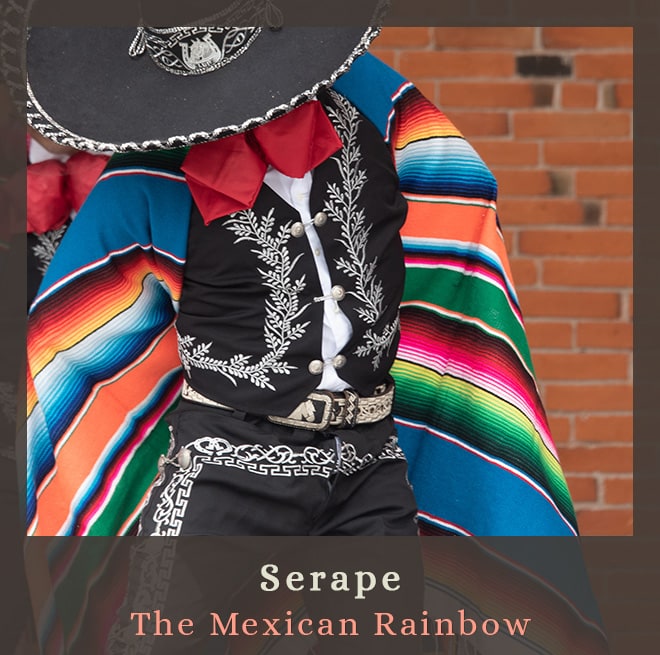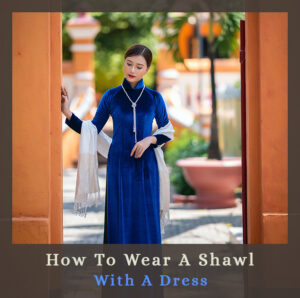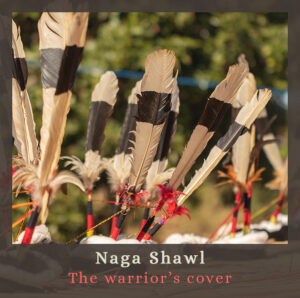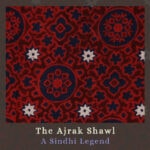The Serape is a vibrant, large Mexican shawl and an iconic, cherished traditional symbol. As the most valued and recognized Mexican textile, the Serape has gained popularity due to its beautiful, colorful designs and detailed craftsmanship, each thread weaving history and tradition into the fabric.
In Mexico, there is a saying that “the ancestors took all the sun and all the rainbows in the world and made them stay still in the folds of the serape”.
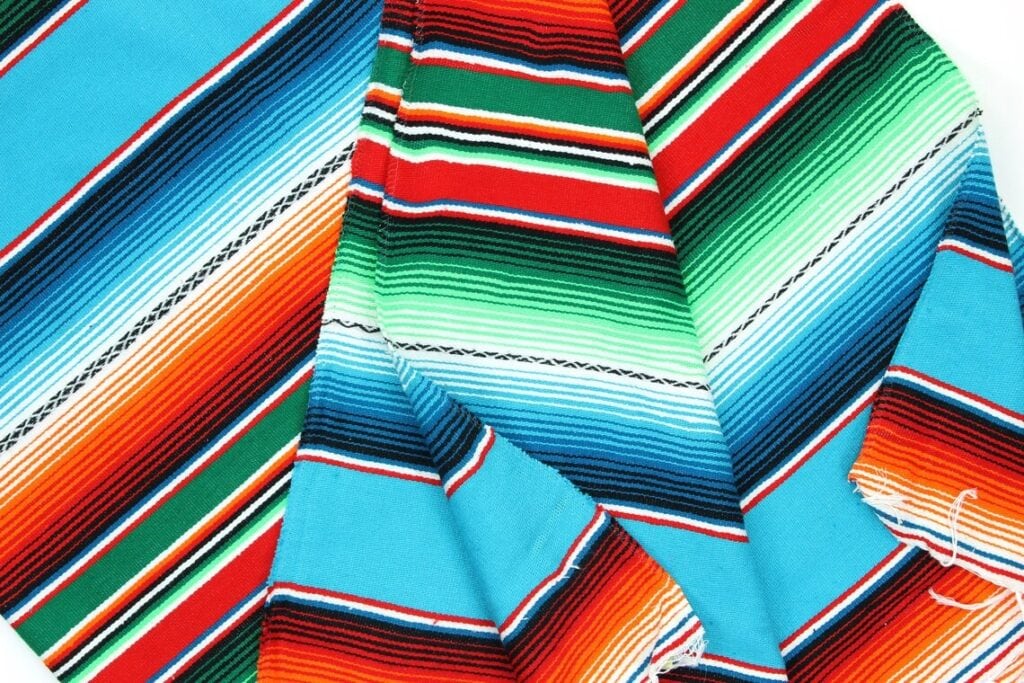
The Sarape has withstood the test of time. It has endured and thrived from the pre-Hispanic and colonial periods to modern times. As a result, it is more than just a garment; it is considered one of the highest representations of Mexican textile art and a reflection of the confluence of Native American and European cultures.
Let’s make a jump to Mexico to uncover the rich history, cultural importance, and fascinating craftsmanship behind the famous Mexican serape.
What is a Serape?
A serape is a large, rectangular-shaped textile made of wool, cotton, or, in earlier times, from ayate fibers derived from the agave maguey plant. It was commonly woven on a pedal loom and used as a warm cover-up that drapes over the body.
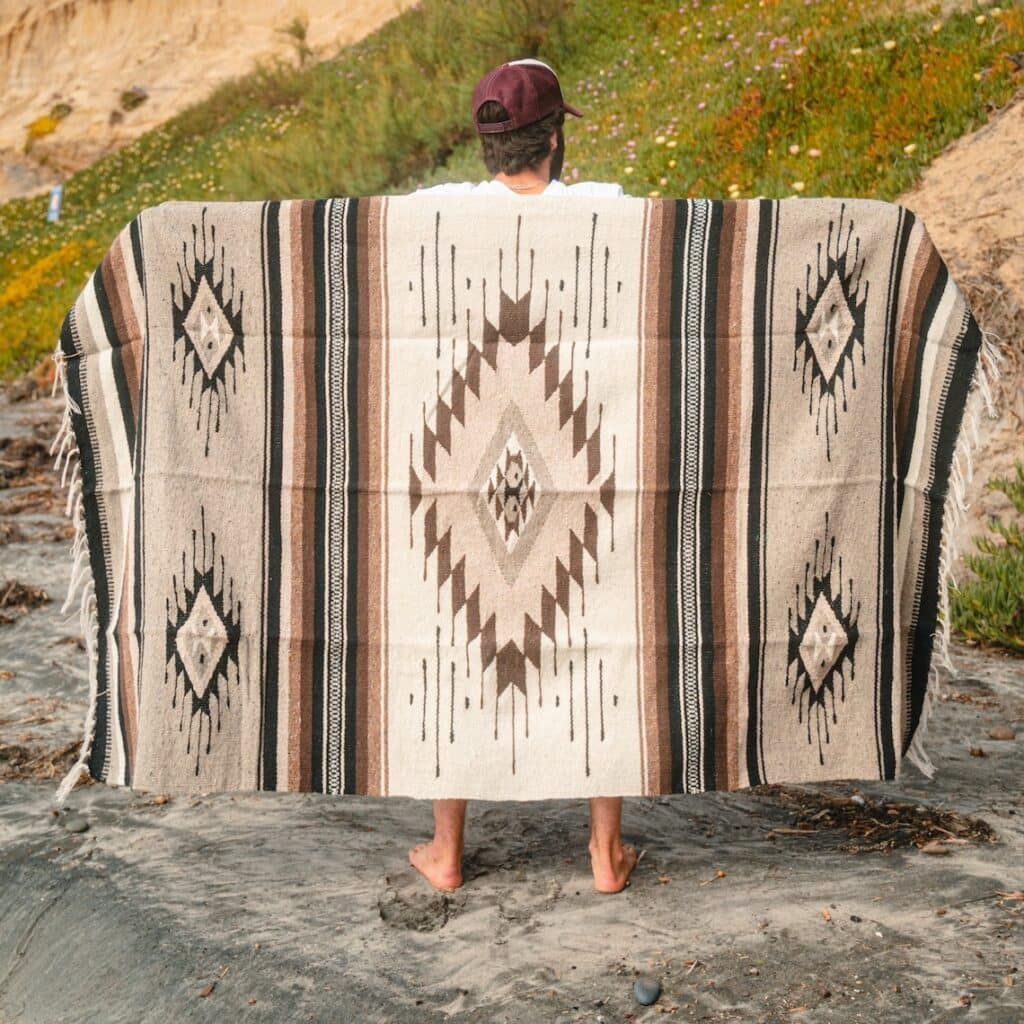
The Serape’s original name, Tzalampepechtli, reveals its primary purpose: ‘tzalan’ means ‘interwoven,’ and ‘pepechtli’ means ‘blanket.
**The term ‘Serape’ likely originates from Nahuatl, a dominant local Mexican language before colonization.
The Serape was first made as a cover to protect the people of central Mexico in the city of Tlaxcala from the rough, cold weather. This fact explains the large size of the traditional Serape shawl.
The Serape shawl has various designs; however, the most popular and recognizable one worldwide features a colorful striped pattern that outlines a rainbow of bright colors.
The authentic Serape has a rectangular shape, but these days, the colorful Serape design is also commonly used for other garments like ponchos, tops, pillows, and other accessories.
The History & Origin of the Serape
Origin
The Serape is rooted in local Mexican outer garments known as ’tilmatli’ or ’tilma’. Evidence sends us back to the Postclassic time (950-1521 AD) in the Chiautempan and Contla regions, now known as Tlaxcala, an area in central Mexico where the climate can be pretty icy.
Though women weavers mostly made the Serapes, they were worn by men only. The weavers used simple two-beamed backstrap looms, with one beam attached to a post and the other fastened to a strap wrapped around the weaver’s waist.
These first serapes featured different fibers and designs, which changed depending on the social sector to which they belonged:
The upper-class sectors, such as chiefs, rulers, and spiritual leaders, used serapes made of cotton cloth and wore it as a tunic, tying it with a knot on the right shoulder.
The middle class wore serapes made of ayate fiber, a thick cloth derived from the fibers of the agave maguey, and tied it over the left shoulder.
The lower class, who served the primary sectors, also used ayate fiber serapes or tilmas, with the difference that they tied it behind the neck to help them carry the crops or materials they had to transport.
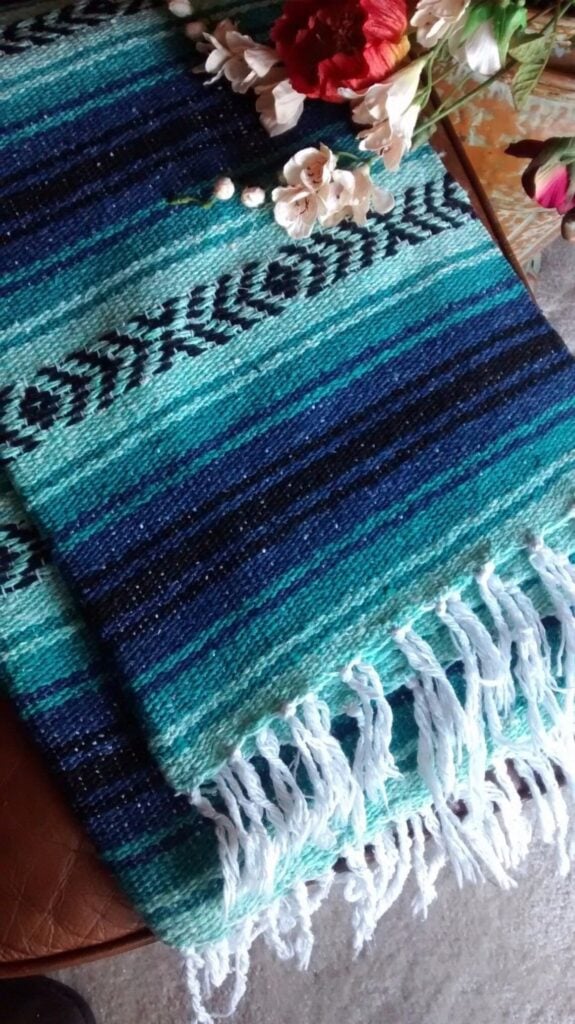
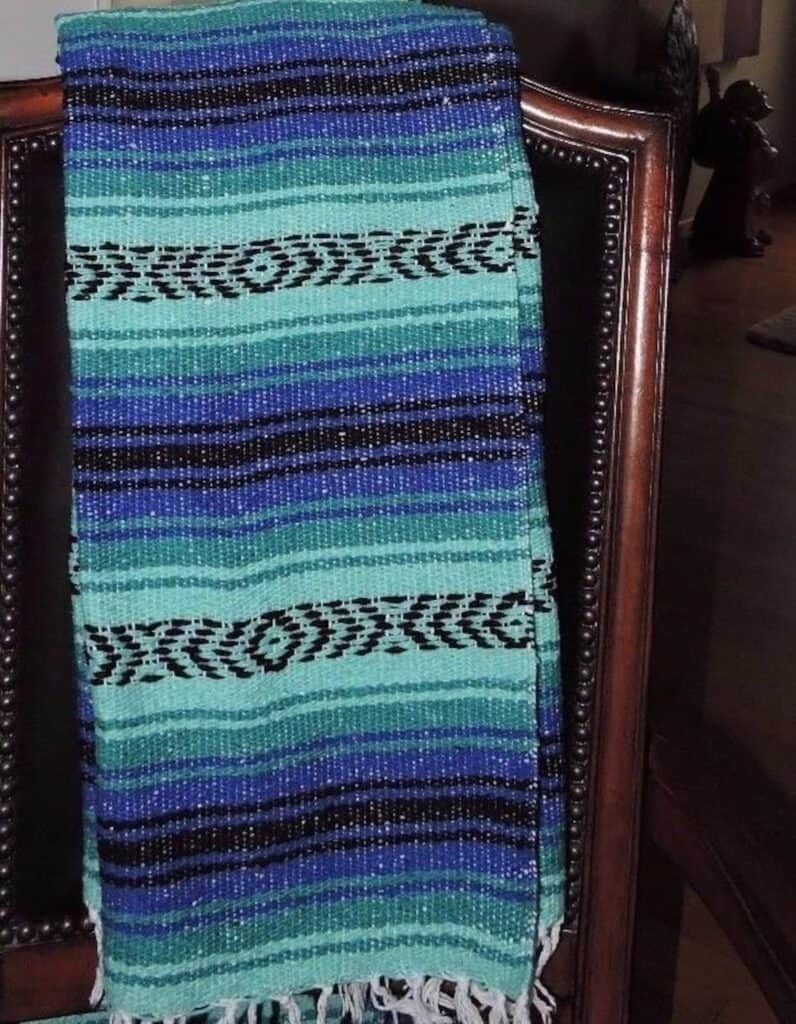
Adopting New Techniques and Materials
When Spanish colonialism arrived in Mexico, the Spaniards brought technologies and materials Mexico did not yet have. The new arrivals included more sophisticated looms (pedestal looms), sheep’s wool, and brighter dyes. The merging of Native cultures with European newcomers led to a collaboration of techniques, experiences, and knowledge in various areas of life, such as food and… textiles.
The Tlaxcalan Indians embraced the new rulers, adopted their advanced techniques and materials, and began producing Serapes using their authentic art and skills.
During that time, many Tlaxcalan families relocated to the country’s northern parts as part of their bond with the Spaniards.
This migration facilitated the spread of Tlaxcalan textiles to various regions and communities, including the Aztecs, the Mexicas, and Teocaltiche in Jalisco, southern Mexico. As a result, the Serape became localized in many new areas and appeared in various designs and styles, influenced by local climate, craftsmanship, and the regional landscapes.
Among the regions where the Tlaxcalans settled was Coahuila, a state known for its rich textile heritage. In the city of Saltillo, located within Coahuila, the Tlaxcalans continued to craft Sarapes, now incorporating designs inspired by the colors of their new landscape – The Desert!
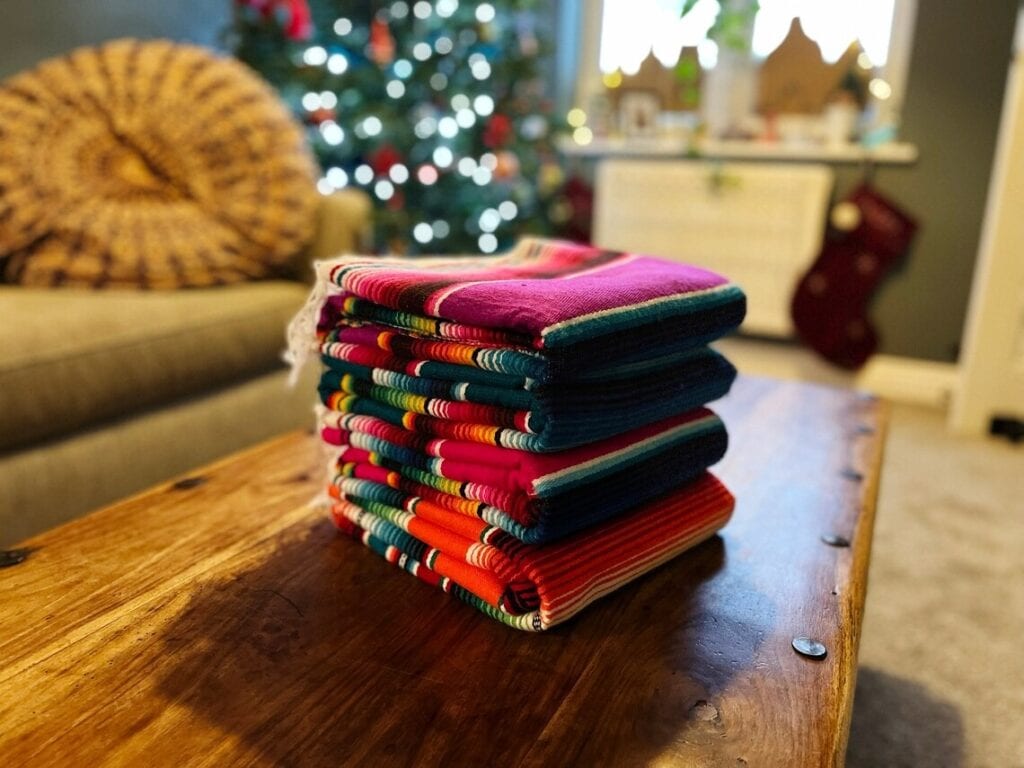
Serape de Saltillo
The Serape design that evolved in Saltillo became known worldwide for its unique design and details and is called “Serape de Saltillo”. Its design features three main characteristics:
- A central diamond or rhombus symbolizes northeastern Mexico’s sunrises and sunsets, signifying wealth and power.
- Stripes of earthy colors inspired by the desert’s sparse vegetation and contrasting landscapes.
- Finer threads that result in vibrant patterns mirroring the hues of sky and earth.
This shawl is the direct ancestor of the iconic rainbow design in today’s most recognizable Serape.
The evolving styles from different local regions have made Saltillo’s Serapes distinct, characterized by their high-quality wool and central diamond motif, symbolizing high status, making them favored by the elite.
In the coming years, the Saltillo Serape adopted more motifs, such as elegant roses, a symbol of beauty, and noble carnations that grow in the desert and represent passion and perseverance.
Over the centuries, these distinctions and transformations have enabled the Saltillo serape to attain its revered status. Noble families and artists adopted it, weaving their heraldic emblems and art into the fabric.
The tilmas arrived in Saltillo in 1591, where their elaboration and design began to syncretize with the influence of the Spanish, giving way to the serape as we know it today.
How did the serape become famous?
According to the Museo del Serape in Coahuila, the serape began to become popular at the end of the 16th century, when people from different parts of the country made the Serapes part of their wardrobe, and more social sectors started wearing them.
One hundred years later, during the Mexican Revolution, the Serape became a symbol of freedom, usually worn by revolutionaries such as Venustiano Carranza and Emiliano Zapata. And that made a Serape boom!

The Serape got a deeper meaning to Mexico when the painter Diego Rivera captured it in his 1915 work “The Zapatista Landscape“. The painting presents the Mexican revolution, paying homage to Emiliano Zapata, the Mexican revolutionary of peasant origin who led the fight for the country’s defense and was commonly seen wearing Serapes.
Although the Serape was more typical to the lower classes in revolutionary Mexico, it was also used by the large landowners, who added fine woven serapes to their charro suit, sometimes combined with interwoven silk, gold, or silver threads.
Mexican art adopted the Saltillo serape. It was displayed in museums, paintings, and movies, where stereotyped charros (Mexican horse riders) were shown using it as part of their clothing. This, of course, made the Serape become a celebrity and one of the most familiar Mexican icons worldwide.
Serape in modern Mexico
In 2023, many people in Mexico, mainly in rural areas, still wear the Serape as part of their daily outfit. It is also common to find Serapes used as home decor across households of all sections, often serving as bed blankets, rugs, wall decorations, and more.
It is easy to find Serapes that resemble various original designs, but their manufacture and usage have evolved. Currently, some Serapes with Saltillo designs do not have a central diamond, and their design consists solely of lines in varying color combinations. In fact, this design has become the most popular internationally.
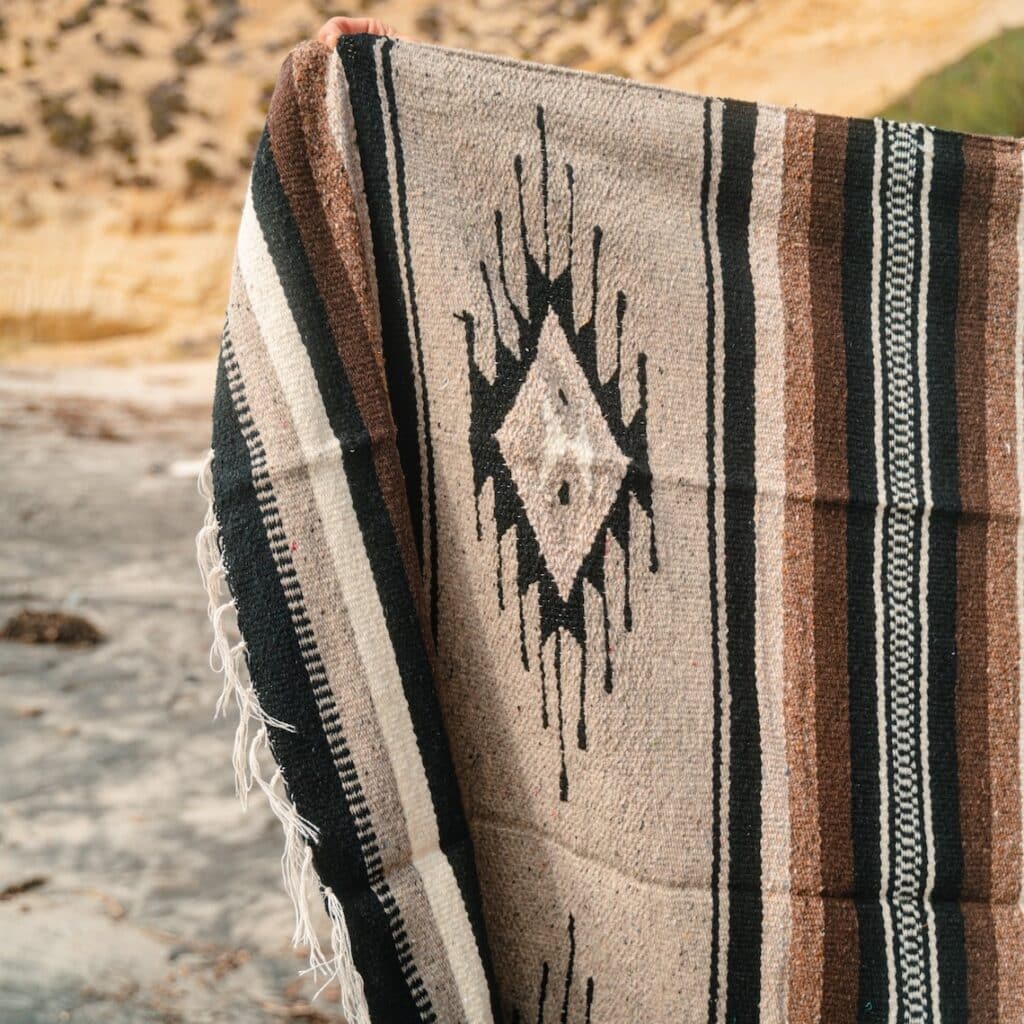
Many different qualities and designs of serapes are available in the market. Naturally, hand-woven serapes are the most valued for their intrinsic beauty and quality, but the majority are now produced in factories.
Serape vs. Jorongo
While a serape refers to a shawl or blanket created in various local Mexican designs, a jorongo is a poncho made from these same fabrics. Therefore, when a serape, typically rectangular, has an opening for the head, it is more accurately referred to as a jorongo.
Serape vs. Poncho
The term ‘poncho’ refers to a fabric with an opening for the head in the center; it can be rectangular, square, diamond-shaped, or circular. On the other hand, a Serape is an authentic Mexican rectangular shawl with a unique design and characteristics, as explained earlier. Both are typical, original outer garments South Americans and Mexicans use and are renowned worldwide. A Poncho made from serape fabric is called a jorongo.
Serape vs. Shawl
The original Serape is a shawl, but not all original shawls are Serapes. What defines a Serape as a shawl is its generous rectangular shape.
The Serape is a Mexican shawl recognized for its unique design, notably its bright-colored, rainbow-striped pattern.
On the other hand, a shawl is a garment that has many different origins and designs worldwide. My research, as presented in my blog posts (with many more to come), reveals that nearly every culture, state, and sometimes even each region has its unique version of a shawl. These varying shawls differ in design, materials, craftsmanship, and purpose, influenced by local traditions, weather conditions, landscapes, and more.
Well-known cultural shawls include Pashmina, Sarong, Longi, Serape, and more. Shawls serve many purposes and are popular as fashionable garments. Primarily used for warmth, they are also commonly used for weddings, meditation, backpacking, and more.
Learn more about what exactly is a shawl >>
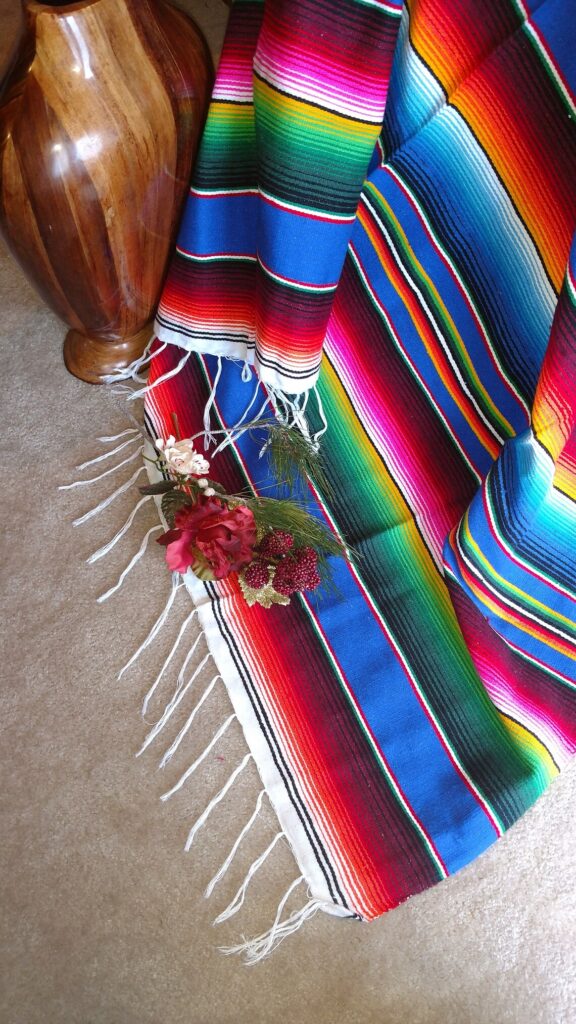
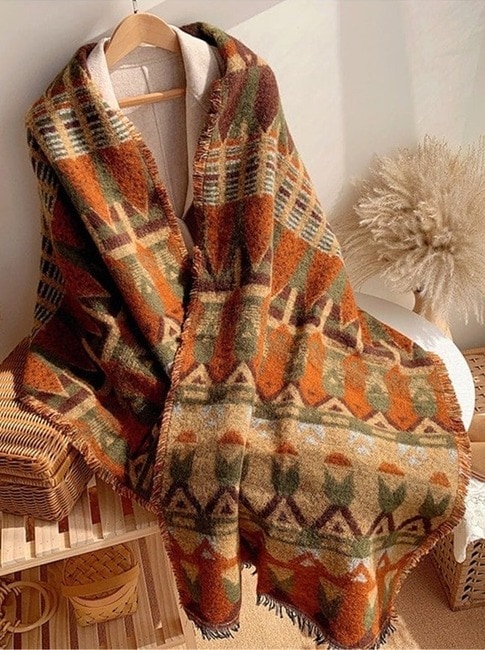
Right: Faux Fur Women’s Shawl
Are Serapes Cultural Appropriation?
Adopting elements from another culture without proper acknowledgment or understanding often leads to their misuse outside of their original context. This practice can harm both the originating culture and those who unknowingly adopt the misrepresented elements.
How can we measure the value of these cultural assets? We might find the right insights if we explore the broader significance of preserving ancient crafts and traditions across cultures.
The Serape embodies the fusion of Indigenous and European cultures, blending traditional textile crafting techniques with ancient materials and iconography. This cherished art form is carefully preserved in Mexico, with ongoing efforts to recognize the Sarape de Saltillo as an iconic symbol of Saltillo, Coahuila, and Mexico.
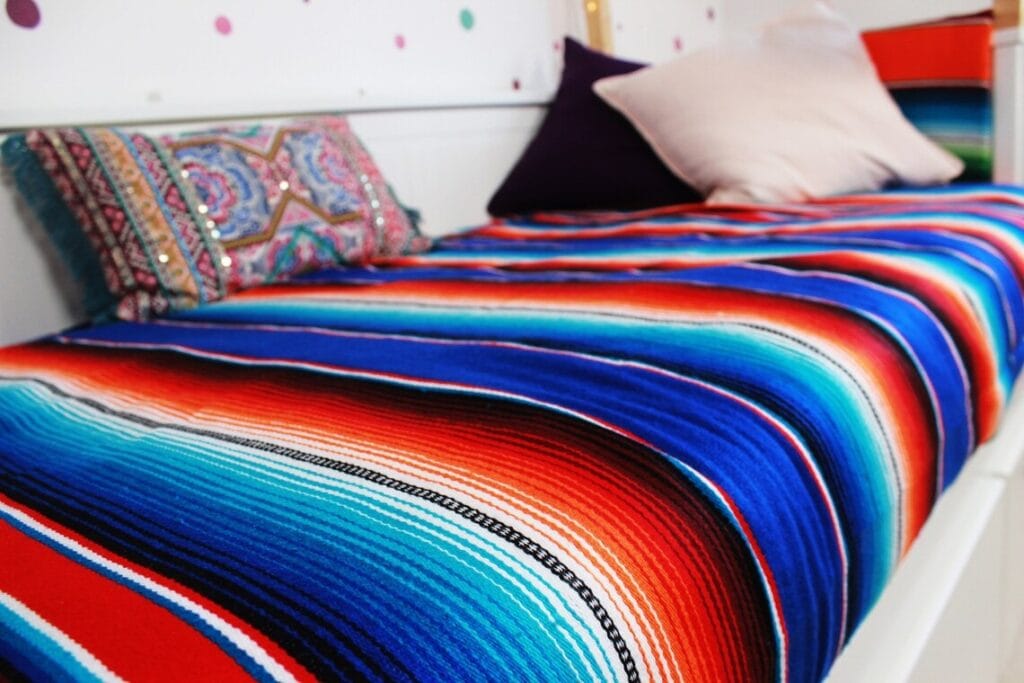
Mexican artist Ignacio Netzahualcoyotl emphasizes the crucial role of weaving in reflecting the cultural, historical, and anthropological essence of communities in Mexico. He stated, “Textiles are documents that capture the different stages of life in many indigenous regions of Mexico. They feature unique techniques and iconographies specific to their kind and region, which record the people’s interactions with their environment, flora, and fauna, as well as their worldview, life, and heritage”.
So, when the top designers Ralph Lauren (1,2), Carolina Herrera (1,2), and Comme des Garçons (1,2) created stunning garments inspired by the serape, they actually misused their source of inspiration. Taking the Mexican cultural assets with their eternal beauty and value and using them as a trend of the moment made their actions cultural appropriation, and they were accused of doing so.
Personal note
I adore fashion, and when design meets ancient traditions, wonders come out. As consumers, it allows us the joy of wearing a garment that is nothing less than a piece of art. But fashion trends come and go, and precious cultural assets risk being devalued when used solely for their aesthetic appeal, regardless of how outstanding the outcome might be.
I think the right way is somewhere in between – It would be quite difficult not to take inspiration from cultural sources while making new designs, however, communication and attribution to the right sources are crucial in avoiding disrespectful use of cultural gems.
Wrapping it up
The Serape holds so much more than just a beautiful, colorful garment. The hand-woven is, of course, the most beautiful and precious, but even the mass-production garments I’ve seen have the cheerful Mexican energy.
Though its origin goes way back, it seems that the fabric that holds all the suns and rainbows in the world has an eternal charm that is way beyond quality.

